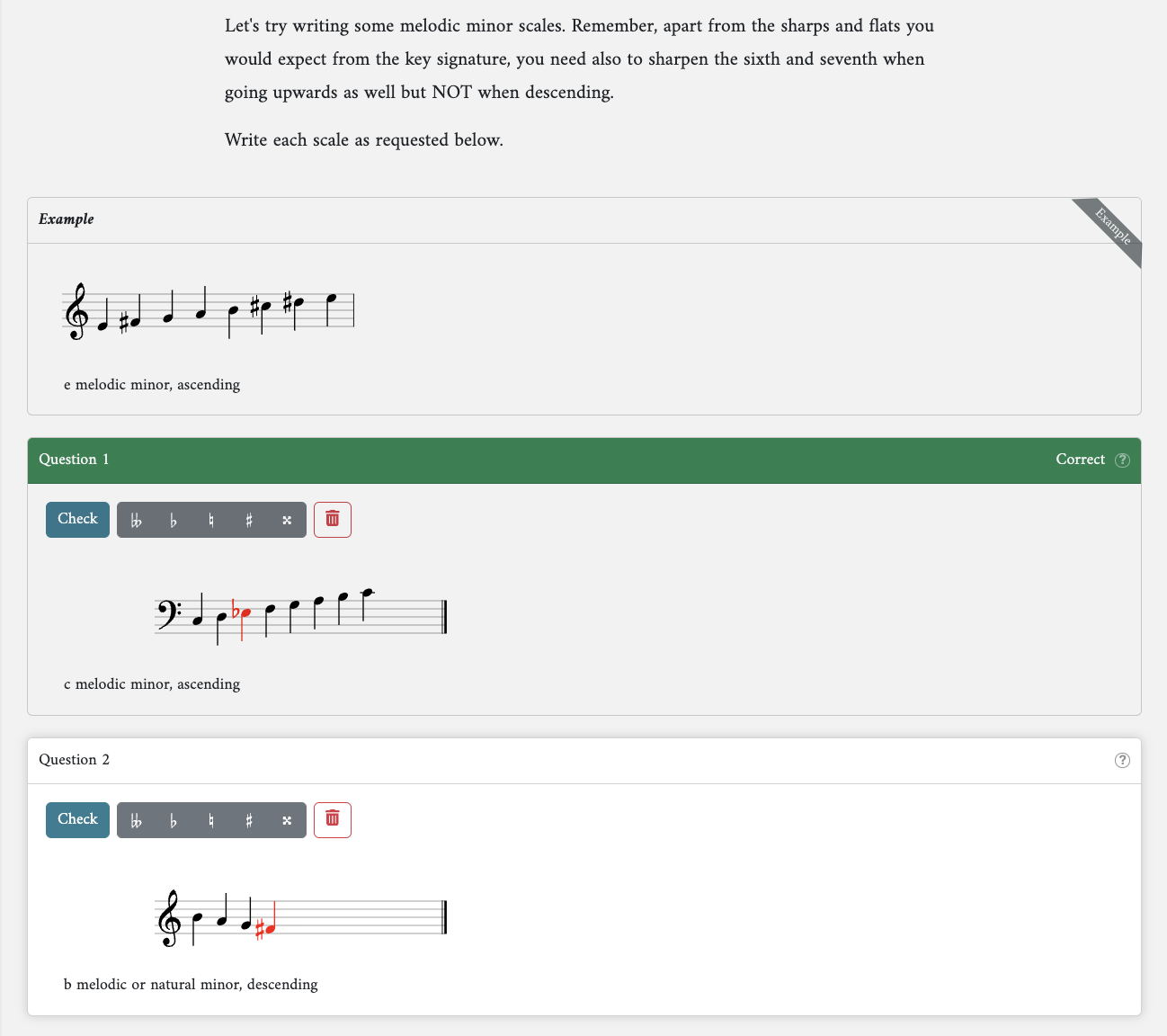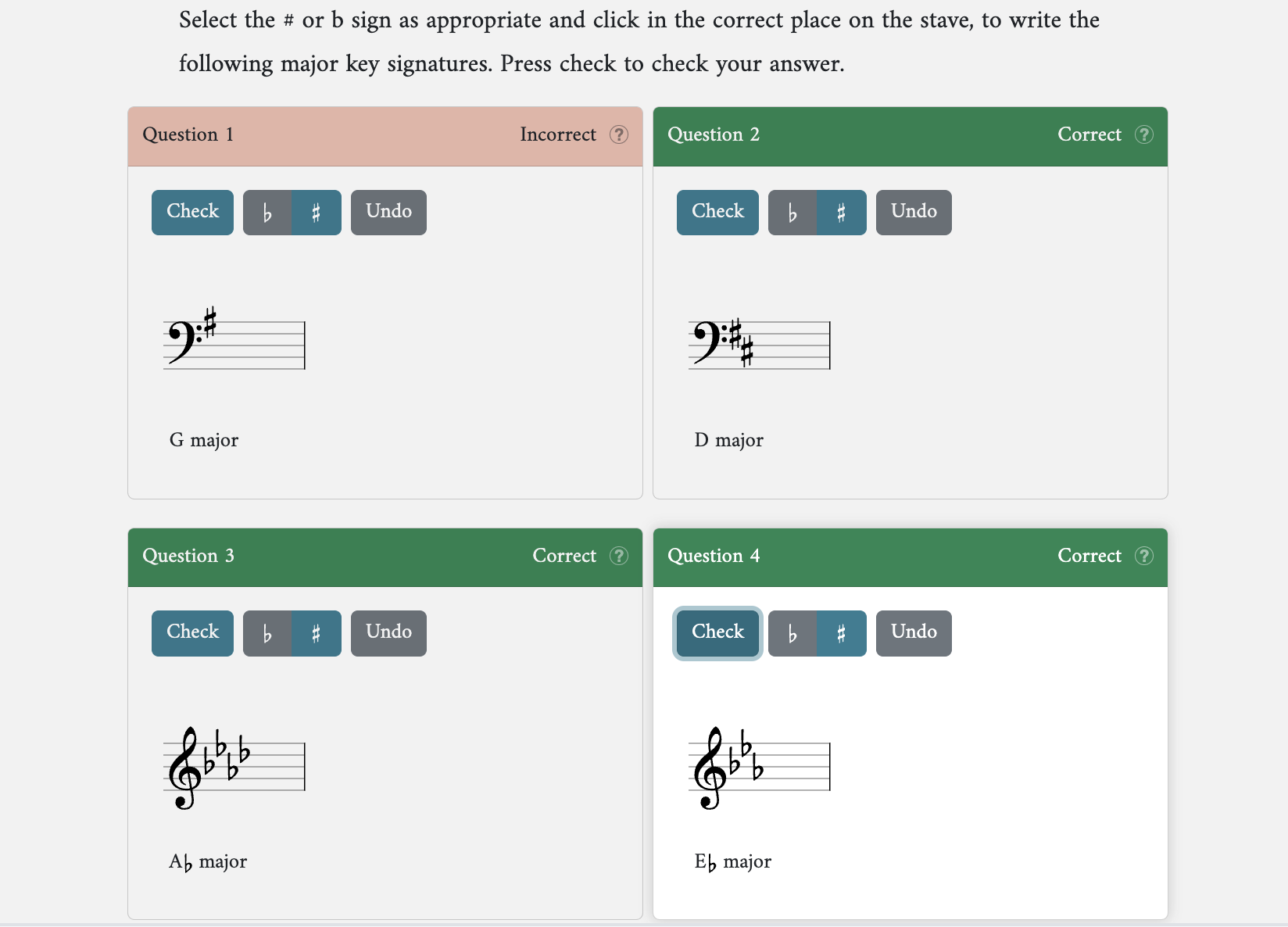
MTB Exams (Music Teachers' Board) is fast becoming recognised as a key player in the graded exams market, with their practical exams being very well received by pupils and teachers. Interactive Music Theory is a new product, offering digital theory courses and exams from Foundation to Grade 5, with Grades 6 to 8 due later this year. The offer seems to be pitched mainly at classroom settings, but I think that peripatetic teachers would also find it useful in one-to-one teaching.
MTB's Grade 5 theory is recognised by ABRSM as an alternative prerequisite to reach the higher instrumental grades, and it seems much more pupil-friendly than other options. Put this together with Ofqual's accreditation and some competitive pricing, and MTB's competitors will need to think about raising their game.
Each grade has three areas: Learn, Practice and Exam. The MTB website is easy to navigate, with very clear instructions. At every stage, there are options to check frequently asked questions or go over material that will help you achieve the right answer. The preparatory materials (learning course and practice questions) are very useful in their own right, even if you choose not to take the exam.
Teachers can register as a centre or as an individual, and pupils can link to their teacher's account so that everyone can track progress. Courses are designed to work from one central screen or individual devices, allowing everyone to work at their own pace, if required. Once bought, a course or exam can be accessed for up to 12 months. The system randomises questions so that no two exams or courses are the same, making it easier to police and avoid the sharing of answers between classmates.
The uniqueness of MTB's approach to theory is the interactive nature of their courses. A simple yet effective model enables pupils to add notes to a stave as part of the questions, try notes out on the keyboard, and listen to audio examples. This linking of theory to real-world musical sounds encourages pupils to understand how theoretical elements connect to their own instrument learning journey. Pupils who use notation software or DAWs will find everything very familiar; again, connecting various aspects of their learning. It is also a lot more fun – I felt compelled to continue my journey through Grade 5 as I was enjoying the process!

There's a slick simplicity to the layout of each page, which helps keep the user's attention and makes tasks easy to complete on any device. I tried the exercises on my desktop computer, iPad and smartphone with equal ease, which is important when considering today's range of devices. If your institution limits the use of these in classrooms, a teacher can present from their computer to a large screen, and then ask pupils to carry out tasks at home. A great deal of care has been taken, also, to ensure flexibility for different scenarios and user groups, catering for different rates of learning and for SEN pupils.
The ability to get instant feedback is helpful for pupils working on their own. It is possible, using the very clear instructions, for someone to complete most of a course without teacher input, if they are so inclined.
The courses cover areas similar to those of more established exam boards. However, in my opinion, these are better explained by MTB thanks to clear instructions and simple language, without instrument bias.
Interactive Theory could also interlock with a GCSE scheme of work, thus making GCSE Music more accessible to a greater variety of young musicians. The early grades would also make useful teaching material for classroom music lessons with much younger age-groups. There's almost an ‘online quiz’ feel about the fundamentals of music theory, which would engage younger pupils.

I like the option to switch from British to American nomenclature (crotchets and quavers to quarter-notes and eighth-notes, etc.). I can see how some British pupils might even find the American option preferable, particularly those with a mathematical inkling, or neurodiverse learners.
Interactive Music Theory is a seriously useful option for obtaining a theory qualification. But more than that, it is an interactive tool that will engage 21st-century pupils in a meaningful way. This product speaks to pupils in a familiar technological context, and a far greater number will find this more appealing than traditional pen-and-paper approaches.
I appreciate that it is hard to deviate from tried-and-tested methods and exam boards, but I would urge everyone at least to try this new approach. In today's world, our pupils work and think differently, and MTB has come up with a modern solution to teaching and learning.
I showed this course to a number of colleagues and pupils, who all agreed that it is a breath of fresh air. It may well help break down boundaries and change the discussion of music theory as simply a means to accessing the higher grades. Bravo, MTB! I look forward to exploring the higher grades when these are ready.
- mtbexams.com/music-theory
- License pricing available for schools or organisations purchasing quantities for whole classes. For more information, contact development@mtbexams.com




